
Mihai Eminescu was a Romanian Romantic poet from Moldavia, novelist, and journalist, generally regarded as the most famous and influential Romanian poet. Eminescu was an active member of the Junimea literary society and worked as an editor for the newspaper Timpul, the official newspaper of the Conservative Party (1880–1918). His poetry was first published when he was 16 and he went to Vienna, Austria to study when he was 19. The poet's manuscripts, containing 46 volumes and approximately 14,000 pages, were offered by Titu Maiorescu as a gift to the Romanian Academy during the meeting that was held on 25 January 1902. Notable works include Luceafărul, Odă în metru antic, and the five Letters (Epistles/Satires). In his poems, he frequently used metaphysical, mythological and historical subjects.
Romanian literature is the entirety of literature written by Romanian authors, although the term may also be used to refer to all literature written in the Romanian language or by any authors native to Romania.

Titu Liviu Maiorescu was a Romanian literary critic and politician, founder of the Junimea Society. As a literary critic, he was instrumental in the development of Romanian culture in the second half of the 19th century.
Junimea was a Romanian literary society founded in Iași in 1863, through the initiative of several foreign-educated personalities led by Titu Maiorescu, Petre P. Carp, Vasile Pogor, Theodor Rosetti and Iacob Negruzzi. The foremost personality and mentor of the society was Maiorescu, who, through the means of scientific papers and essays, helped establish the basis of the modern Romanian culture. Junimea was the most influential intellectual and political association from Romania in the 19th century.
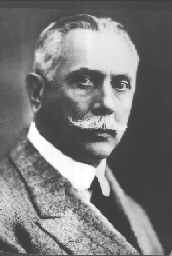
Duiliu Zamfirescu was a Romanian novelist, poet, short story writer, lawyer, nationalist politician, journalist, diplomat and memoirist. In 1909, he was elected a member of the Romanian Academy, and, for a while in 1920, he was Foreign Minister of Romania. Zamfirescu is best remembered for his Comăneștenilor literary cycle, comprising his novels Viața la țară, Tănase Scatiu, În război, Îndreptări, and Anna.

Pantazi Ghica was a Wallachian, later Romanian politician and lawyer, also known as a dramatist, poet, short story writer, and literary critic. A prominent representative of the liberal current, he was the younger brother and lifelong collaborator of Ion Ghica, who served as Prime Minister of the Romanian Kingdom in 1866-1867 and again in 1870-1871. Pantazi Ghica began his political career as a participant in the Wallachian Revolution of 1848, a collaborator of the Romantic historian and activist Nicolae Bălcescu, and a member of the radical grouping headed by C. A. Rosetti. Although twice involved in the administration of Buzău County, Ghica lived much of his life in exile or in Bucharest, and was also a soldier for the Ottoman Empire during the Crimean War. After 1875, he was a prominent member of the National Liberal Party.

Nicolae Petrovici, known as Nicolae Petrașcu and commonly rendered as N. Petrașcu or Pĕtrașcu, was a Romanian journalist, essayist, literary critic, novelist, and memoirist. The author of monographs on major figures in Romanian literature, Petrașcu was originally affiliated with the conservative literary society Junimea, but did not embrace all its tenets. Like his friend, novelist Duiliu Zamfirescu, he parted with the group and, together with Dimitrie C. Ollănescu-Ascanio, established a new circle around the magazine Literatură și Artă Română.
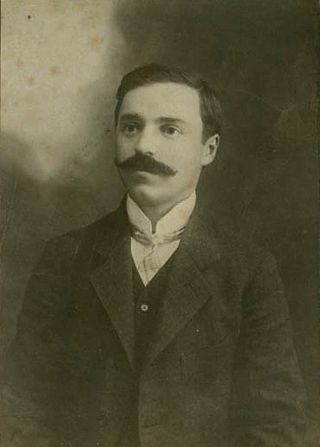
Panait Cerna was a Romanian poet, philosopher, literary critic and translator. A native speaker of Bulgarian, Cerna nonetheless wrote in Romanian, and developed a traditionalist style which was connected with classicism and neoclassicism. Praised by the conservative literary society Junimea, he was promoted by its leader Titu Maiorescu, as well as by Maiorescu's disciples Mihail Dragomirescu and Simion Mehedinţi. Cerna became the group's main representative during its decline, contributing to both major Junimist magazines, Convorbiri Literare and Convorbiri Critice. He also contributed pieces to the traditionalist magazine Sămănătorul, and was briefly affiliated with other literary journals.

Sămănătorul or Semănătorul was a literary and political magazine published in Romania between 1901 and 1910. Founded by poets Alexandru Vlahuță and George Coșbuc, it is primarily remembered as a tribune for early 20th century traditionalism, neoromanticism and ethnic nationalism. The magazine's ideology, commonly known as Sămănătorism or Semănătorism, was articulated after 1905, when historian and literary theorist Nicolae Iorga became editor in chief. While its populism, critique of capitalism and emphasis on peasant society separated it from other conservative groups, Sămănătorul shared views with its main conservative predecessor, the Junimea society, particularly in expressing reserve toward Westernization. In parallel, its right-wing agenda made it stand in contrast to the Poporanists, a Romanian populist faction whose socialist-inspired ideology also opposed rapid urbanization, but there was a significant overlap in membership between the two groups. Sămănătorul's relationship with the dominant National Liberal Party was equally ambiguous, ranging from an alliance between Sămănătorul and National Liberal politician Spiru Haret to Iorga's explicit condemnation of 20th century Romanian liberalism.

Luceafărul is a narrative poem by Romanian author Mihai Eminescu. It was first published in 1883, out of Vienna, by Romanian expatriates in Austria-Hungary. It is generally considered Eminescu's masterpiece, one of the greatest accomplishments in Romanian literature, and one of the last milestones in Europe's romantic poetry. One in a family or "constellation" of poems, it took Eminescu ten years to conceive, its final shape being partly edited by the philosopher Titu Maiorescu. During this creative process, Eminescu distilled Romanian folklore, Romantic themes, and various staples of Indo-European myth, arriving from a versified fairy tale to a mythopoeia, a self-reflection on his condition as a genius, and an illustration of his philosophy of love.
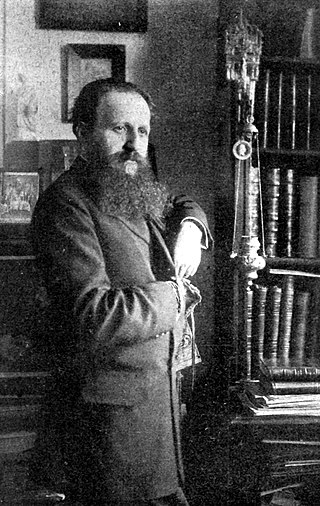
Alexandru Tzigara-Samurcaș was a Romanian art historian, ethnographer, museologist and cultural journalist, also known as local champion of art conservation, Romanian Police leader and pioneer radio broadcaster. Tzigara was a member of the Junimea literary society, holding positions at the National School of Fine Arts, the University of Bucharest and lastly the University of Cernăuți. During his youth, he was secretary to Carol I, the King of Romania. Close to the royal family, he also served as head of the Carol I Academic Foundation, where he set up a large collection of photographic plates. Tzigara achieved fame in 1906 as founder of the "National Museum", nucleus of the present-day Museum of the Romanian Peasant, but was also involved in arranging and preserving the Theodor Aman art fund.
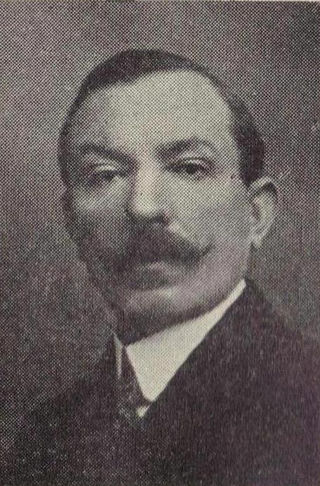
Ioan Alecu Bassarabescu was a Romanian comedic writer, civil servant and politician, who served one term (1926–1927) in the Senate of Romania. His work, mainly in prose form, is remembered as an accomplished and noteworthy contribution to Romanian literature, capturing the dreary life of provincial clerks in the early 20th century. Not interested in producing a singular novel, like his mentor Gustave Flaubert, he concentrated instead on the sketch story genre.

Ion A. Rădulescu-Pogoneanu was a Romanian pedagogue.
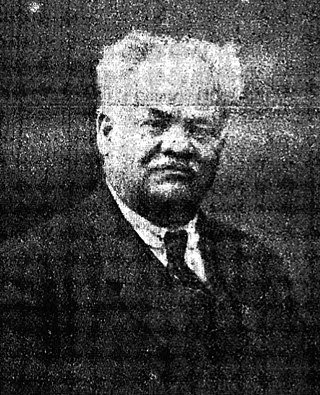
Gheorghe Bogdan-Duică was an Imperial Austrian-born Romanian literary critic. The son of a poor merchant family from Brașov, he attended several universities before launching a career as a critic, first in his native town and then in Czernowitz. Eventually settling in Bucharest, capital of the Romanian Old Kingdom, he managed to earn a university degree before teaching at a succession of high schools. Meanwhile, he continued publishing literary studies as well as intensifying an ardently nationalistic, Pan-Romanian activism. He urged the Romanian government to drop its neutrality policy and enter World War I; once this took place and his adopted home came under German occupation, he found himself arrested and deported to Bulgaria. After the war's conclusion and the union of Transylvania with Romania, he became a literature professor at the newly founded Cluj University. There, he served as rector in the late 1920s, but found himself increasingly out of touch with modern trends in literature.
Lucreția Suciu-Rudow was a Romanian poet from Austria-Hungary.

Mihail Dragomirescu was a Romanian aesthetician, literary theorist and critic.

Ioan Alexandru Brătescu-Voinești was a Romanian short story writer and politician. The scion of a minor aristocratic family from Târgoviște, he studied law and, as a young man, drew close to the Junimea circle and its patron Titu Maiorescu. He began publishing fiction as an adolescent, and put out his first book of stories in 1903; his work centered on the fading provincial milieu dominated by old class structures. Meanwhile, after a break with Maiorescu, he drew toward Viața Românească and Garabet Ibrăileanu. In 1907, Brătescu-Voinești entered the Romanian parliament, where he would serve for over three decades while his written output declined. In his later years, he became an outspoken anti-Semite and fascist, a stance that, following his country's defeat in World War II, gave way to anti-communism near the end of his life.
Petre Paul Negulescu was a Romanian philosopher and conservative politician, known as a disciple and continuator of Titu Maiorescu. Affiliated with Maiorescu's Junimea society from his early twenties, he debuted as a positivist and monist, attempting to reconcile art for art's sake with an evolutionist philosophy of culture. He was a lecturer and tenured professor at the University of Iași, where he promoted the Junimist lobby against left-wing competitors, and formalized his links with the Conservative Party in 1901. From 1910, he taught at the University of Bucharest, publishing works on Renaissance philosophy and other historical retrospectives.
Petru Virgil Manoliu was a Romanian novelist, essayist, and newspaper editor. Shaped by philosophical readings, marked by a sense of anxiety and the influence of André Gide, much of his early literary work falls into the category of Trăirism. These traits are complemented by Manoliu's activities in cultural journalism, alternating between contributions to left-wing papers and support for the far-right and mystical philosophy of Nae Ionescu. By the time of World War II, he had also begun writing historical fiction and plays, penning anticommunist and anti-Soviet articles in the central newspapers.
Alexandru Antemireanu was a Romanian poet, prose writer and literary critic.














